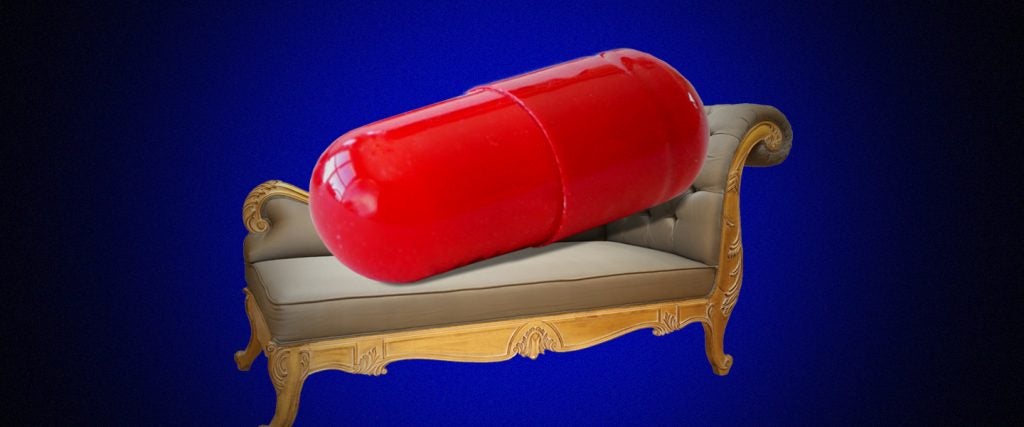In 1966, 18-year-old true-crime enthusiast Benny Smith went on a violent rampage in Arizona, murdering four women and a three-year-old girl. “I’m sure he never dated a girl at school,” one of his classmates told investigators. According to another, he “entertained fantasies in which women were shot or stabbed.”
Smith may not have been viewed this way at the time, but today he’s classified as an incel — a guy whose perceived inability to get laid made him depressed, and then lethal. His story is one of dozens of case studies in Understanding and Treating Incels, a recently released book by mental-health researchers Brian Van Brunt and Chris Taylor. In a nutshell, it’s a crash course for therapists — it aims to teach practitioners about the dangerous phenomenon of inceldom and how best to help these typically young, white men stamp out their nihilistic worldviews before it’s too late.
“I would say incels moved from being seen as a niche concern to a more front-page phenomenon in 2014, with the Isla Vista killings,” Van Brunt tells me. The California massacre made worldwide news — 22-year-old Elliot Rodger stabbed and shot six victims in total, describing his motivations in a YouTube video entitled “Retribution.” Filming in his car before the murders, he outlines his rage at life as a virgin and promises to “slaughter” the women who supposedly made him feel undesirable. In the years since, many incels have hailed him as a “hero.”
According to Van Brunt, there were plenty of indicators that Rodger was falling down a wormhole of radicalization. “He wasn’t doing well at college, he had a long history of failing to obtain relationships and he was physically assaulted at a party the night before the massacre,” he explains. “He narrowed all of these frustrations down to women, so he decided to respond by attacking a sorority house.”
Clearly, Rodger was on what Van Brunt calls a “pathway to violence.” But while he’d been in therapy for various mental-health issues since he was a child, no therapist spotted these signs of his inceldom (in fact, until recently, most therapists weren’t even aware what an incel was). As a result, he never got the help he needed, and his misogyny metastasized into violence.
It doesn’t always have to be like this. “Inceldom is a spectrum, and on the extreme end of it we see people moving toward dangerous attacks. But on the earlier end of the spectrum, it’s simply an ideology,” Van Brunt continues. “So with this book, we’re wondering: How does someone go from having an odd or concerning belief to becoming more radicalized toward violence?”
To understand this, Van Brunt and Taylor spent plenty of time on incel forums decrypting the language of “Chads” (genetically gifted hot guys), “Stacys” (super hot women) and “Beckys” (average women who, in the eyes of incels, are “hypergamous” — they fuck guys hotter than them, leaving their average male equivalents unable to get laid). Their research led to a series of character portraits in the book, which offer a glimpse into the mindsets of incels. “At the heart of his frustrations is a belief that he is worth less than everyone around him and that he does not have value,” Van Brunt and Taylor write in the book.
The co-authors propose a series of interventions to therapists. One involves teaching the incel to think differently about low self-esteem and using cognitive behavioral therapy. Then, there’s narrative therapy, which involves “helping clients with incel indoctrination to examine their lives through the stories they tell” — in other words, they’re taught to reframe their thoughts in more constructive, realistic ways. But the ideal solution would address more than just the incel mind. In Van Brunt’s opinion, we should be taught about incels at school, and “incel support groups” — meetups for incels looking to share their experiences — should have the option to consult with and train with therapists to help de-radicalize them before it’s too late.
That said, the book is designed to be introductory. Van Brunt is under no illusion that nihilistic, “black-pilled” incels, who essentially believe they’re doomed to be forever alone, will be seeking out therapy any time soon. Still, there do seem to be a handful of dudes out there who want it. For instance, in the r/AskATherapist subreddit, one incel goes back and forth with a therapist but ultimately says he “doesn’t want to lie to himself” that there’s any hope for ugly guys to get laid.
Crucially, therapists need a thick skin to even scratch the surface of the incel world — since the book was released last year, Van Brunt and Taylor have found themselves being trolled in forum threads as “fat, goateed motherfuckers who don’t know what they’re talking about.” “I’m not surprised, and I do see the humor in it,” Van Brunt tells me. “These are people in pain. They’re frustrated that they haven’t reached the goals they wanted and they’re choosing a horrible way to express it, but we’ve got to pull them into a different way of thinking.”
To Van Brunt, this involves listening to incels, not writing them off. He reasons that with a better understanding of what makes them tick — and a growing army of therapists well-versed in the lingo of Chads and Stacys — there’s hope yet that at least the occasional incel can be deradicalized.

